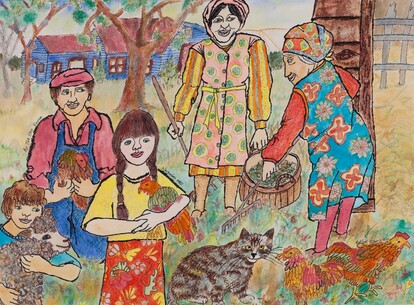
March 6 –June 18, 2025
The exhibition 40 is the new 20! is a story of celebration, recognizing both the 50th anniversary of the Alberta Foundation for the Arts (AFA) art collection and the recent 40th anniversary of the Alberta Foundation for the Arts TREX program. Since 1986 the Art Gallery of Alberta (AGA - formerly the Edmonton Art Gallery) has been affiliated with the TREX program and so this exhibition, presenting twenty works from the AFA collection, celebrates these anniversaries by re-visiting TREX exhibitions produced by the AGA over the past twenty years. Exploring an eclectic mix of themes, genre, art styles and media, this exhibition expresses the vitality of the visual arts in Alberta and the roles of the Alberta Foundation for the Arts and Art Gallery of Alberta in supporting the arts in the province.
Curated by Shane Golby, Art Gallery of Alberta (TREX Region 2).
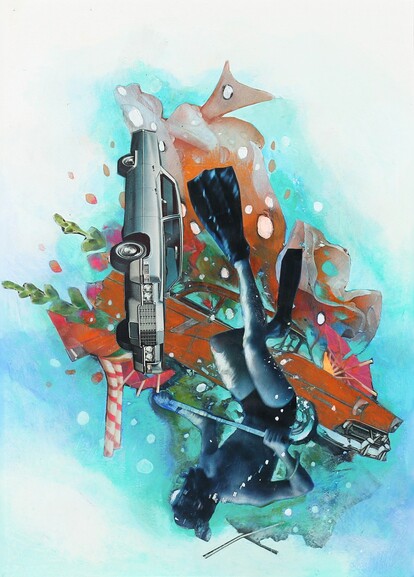
September 5, 2024 –August 27, 2025
The noun ‘collision’ implies the forceful coming together of two or more things. All artmaking involves a collision of materials and whether putting things together or tearing them apart, the act of creation transforms the materials used.
Prior to the 20th century, most two-dimensional artmaking in western Europe and America involved applying paint (or other media) to a surface. In the early 1900s, however, these traditions were dramatically challenged by Pablo Picasso and Georges Braque who focused on a new kind of pictorial construction. Central to this was collage.
This collision between external signifiers, real life and painting – the acts of collage and mixed media – was revolutionary. In playing with the difference between art and illusion, collage and mixed media work expand the definition of painting and question existing notions of surface and dimensionality. These techniques also introduce external meaning to an art piece.
The exhibition Collision Course investigates the use of collage and mixed media in artmaking as expressed in the work of three contemporary Edmonton artists. Exploring various approaches to collage and mixed media, this exhibition invites reflection concerning the materials used and the possible meanings of the images created.
Curated by Shane Golby, Art Gallery of Alberta (TREX Central & Northeast)
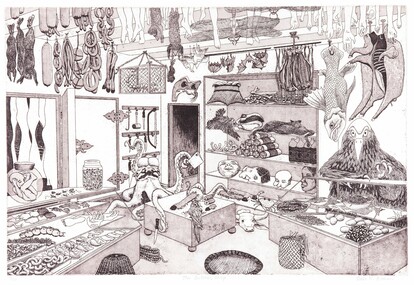
September 5, 2024 –August 27, 2025
Supernatural transformations, mysterious settings, unusual juxtapositions and bizarre events have stirred the imagination of humankind for eons.
During the late 1800s, these concerns became of primary importance to many artists in Europe. Opposed to the preoccupation of Realist and Impressionist artists with recording the exterior world, these artists believed that art should represent absolute truths that could only be described indirectly. Words such as ‘mystery’, ‘suggestion’ and ‘dream’ were often used to describe their creations, expressed in what is known as Symbolist Art.
While symbolist concerns influenced several European art movements in the 20th century, Canadian art during the same period emphasized either representation of the landscape or modernist abstraction. Despite this, however, an interest in the ‘inner eye’ and imagination has long existed in Canadian art.
This exhibition focuses on the fantastical, mysterious and surreal as they have been expressed in the works of Albertan artists over the past fifty years. Presenting works from the collection of the Alberta Foundation for the Arts, this exhibition invites viewers to go beyond ordinary existence, shifting perceptions of reality and encouraging us to question the ’truths’ of everyday life.
Curated by Shane Golby, Art Gallery of Alberta (TREX Central & Northeast)
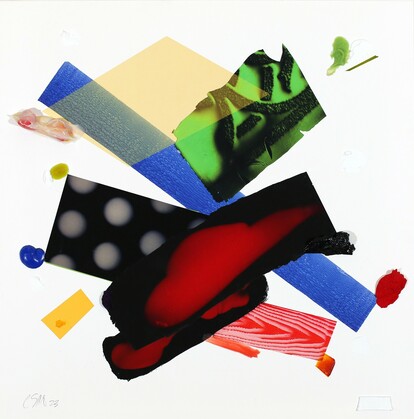
September 5, 2024 –August 27, 2025
For most, the world is a riot of colour. One of the principal elements of art and design, colours describe everything around us; direct our attention and actions; and affect and symbolize our emotions.
Riot on the Walls! explores colour as it is used by three contemporary artists: Gibril Bangura, Clay Ellis and Zachery Reid. The paintings and mixed media artworks in this exhibition are united in their use of vibrant, bold colours. The reasoning behind the choices these artists make, however, is very different. Both Gibril Bangura and Zachery Reid are storytellers who use colour to create a mood and accentuate the story related. Clay Ellis, on the other hand, is an actual part of the ‘story’ he creates. Seeing himself as an explorer, Ellis utilizes abstraction to investigate materials and processes. In this exploration, colour allows him to introduce a spatial quality to a piece and create a sense of animation in his works.
Whether creating ‘representational’ works or investigating abstraction, the artists in this exhibition use colour to express their aims and extend the moment of looking. In the process, they create a conversation with viewers, enabling them to learn about themselves and the world around them.
Curated by Shane Golby, Art Gallery of Alberta (TREX Central & Northeast)
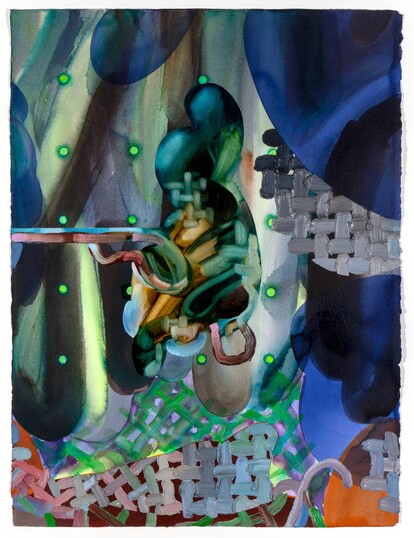
March 6 –August 27, 2025
This group exhibition from the Alberta Foundation for the Arts’ Permanent Collection features a selection of expressionist works which together raise the question, what do you see at first glance? As studies show, when a viewer looks at a piece of art for the first time, the eye is drawn to an initial focal point, but if one looks away and then back again at the piece, the eye is often drawn to a different point.
The paintings in this exhibition use minimal gestural brushstrokes, vibrant colours and line work to draw the viewer in for a momentary presence into the scene the artist has created. As a viewer, you generate a global impression, or a gist, of a painting with the first glance at it. Everyone’s eye may be drawn to a different focal point, and we may all see something the next viewer doesn’t see right away. That is what is so fascinating about art, we all interpret it differently. Some paintings in this exhibition may look like abstract landscapes at first glance, but when you spend more time studying the work, you may see an animal, a boat, a bus or a tree.
At First Glance features the works by sixteen Canadian artists, Bradley R.Struble, Tom Hamilton, Ron Gust, Art Whitehead, Mary Joyce, Pattie Trouth, Audrey Watson, Leslie Pinter, Susana Espinoza, Niina Chebry, Maureen Harvey, Robin Smith-Peck, Les Graff, Kristen Keegan, Mark Mullin, and Daniel May.
Curated by Jamie-Lee Cormier, The Art Gallery of Grande Prairie (TREX Northwest).
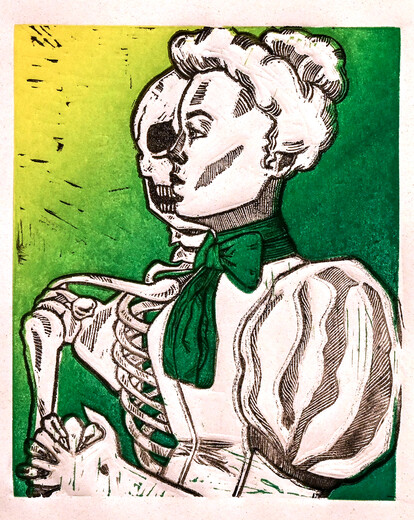
March 6 –August 27, 2025
Folklore and legend are entangled and twisted; one climbs upon the other like vines on a trellis, each stretching to reach the sun and flourish. Lore itself flourishes when stories are whispered behind curtains and around crackling fires. When children pull covers up to their chins, eyes aglow, legends permeate little minds and each story gains strength. The tales are handed down, passed along in the great relay of life, and like wood worn by the sea, they transform into new shapes. The folktales and legends that survive the tests of time are often the tales of heroes and villains. Our heroes are bold and brave, fierce, and powerful, absorbing the self. We see ourselves in the protagonist, making the villains, the monsters, the grotesque obstacle into the other.
So often the heroes of tales have been the courageous, valiant masculine characters whose foes are the monstrous other; often deformed, demonized, and feminized. What is it about the feminized body and the female presenting persona that evokes terror and disgust? What becomes of her when we seek to connect with her monstrosity? The artworks in this exhibition seek to examine the feminized body as the monster in fable, folklore, and literature.
Curated by Jamie-Lee Cormier, The Art Gallery of Grande Prairie (TREX Northwest).
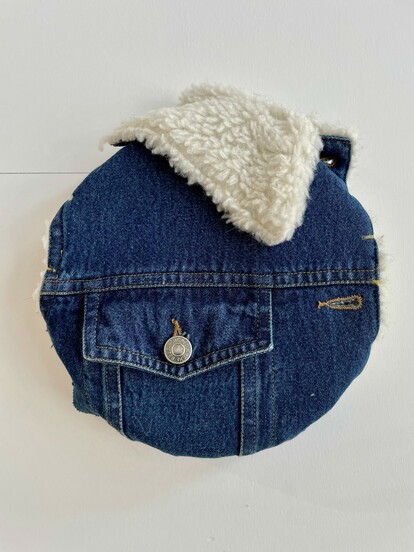
March 6 –August 27, 2025
Patch Portraits showcases the work of Michelle Sound and Raneece Buddan, two artists who employ fabrics and materials of cultural heritage to explore the genre of portraiture and identity. Stitching, patching, and collaging together found and fabricated textiles, the resulting bodies of work by each artist showcase multiple ways in which threads and fabrics can be deployed in contemporary art practices.
Curated by Genevieve Farrell, Esplanade Arts & Heritage Centre (TREX Southeast).
